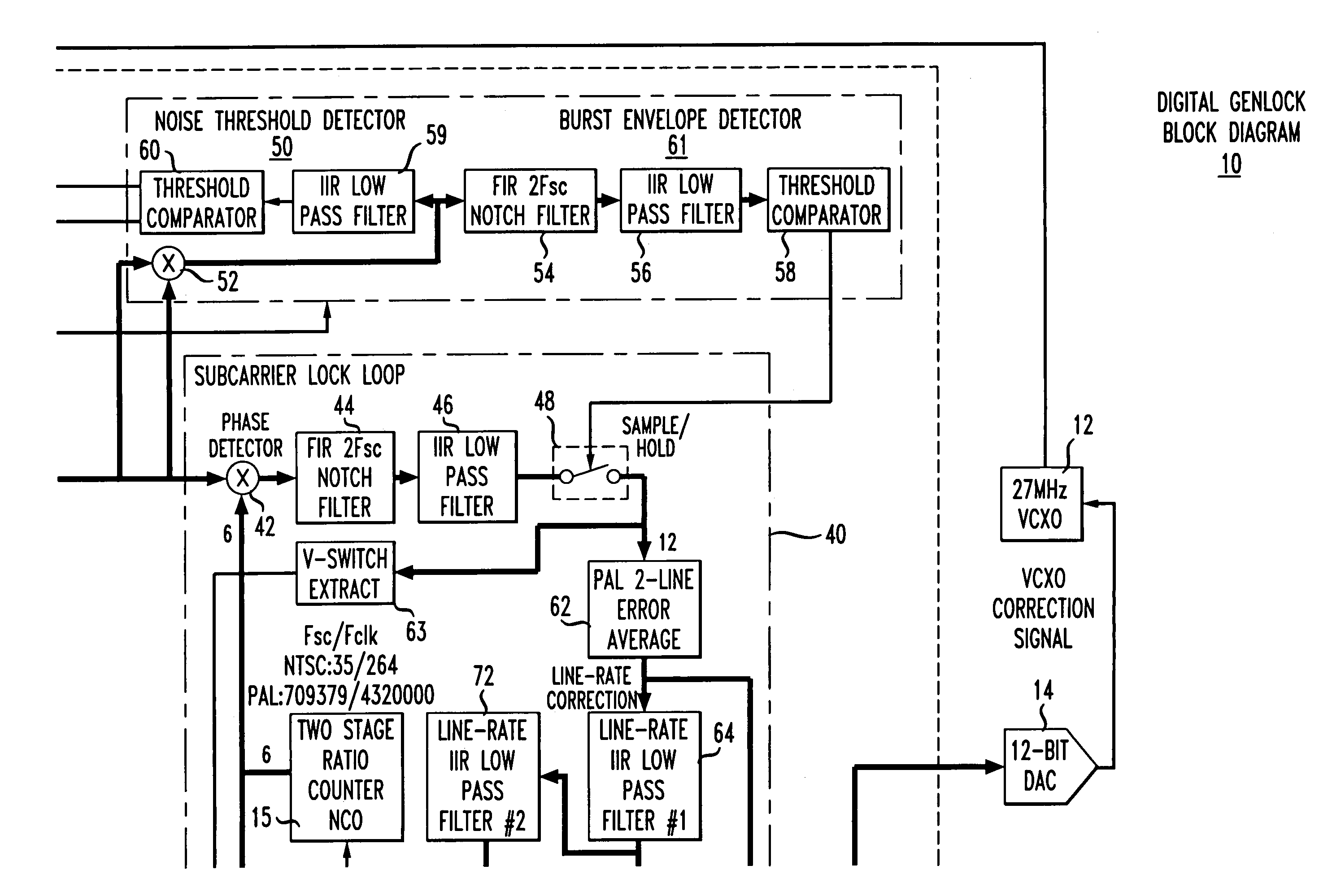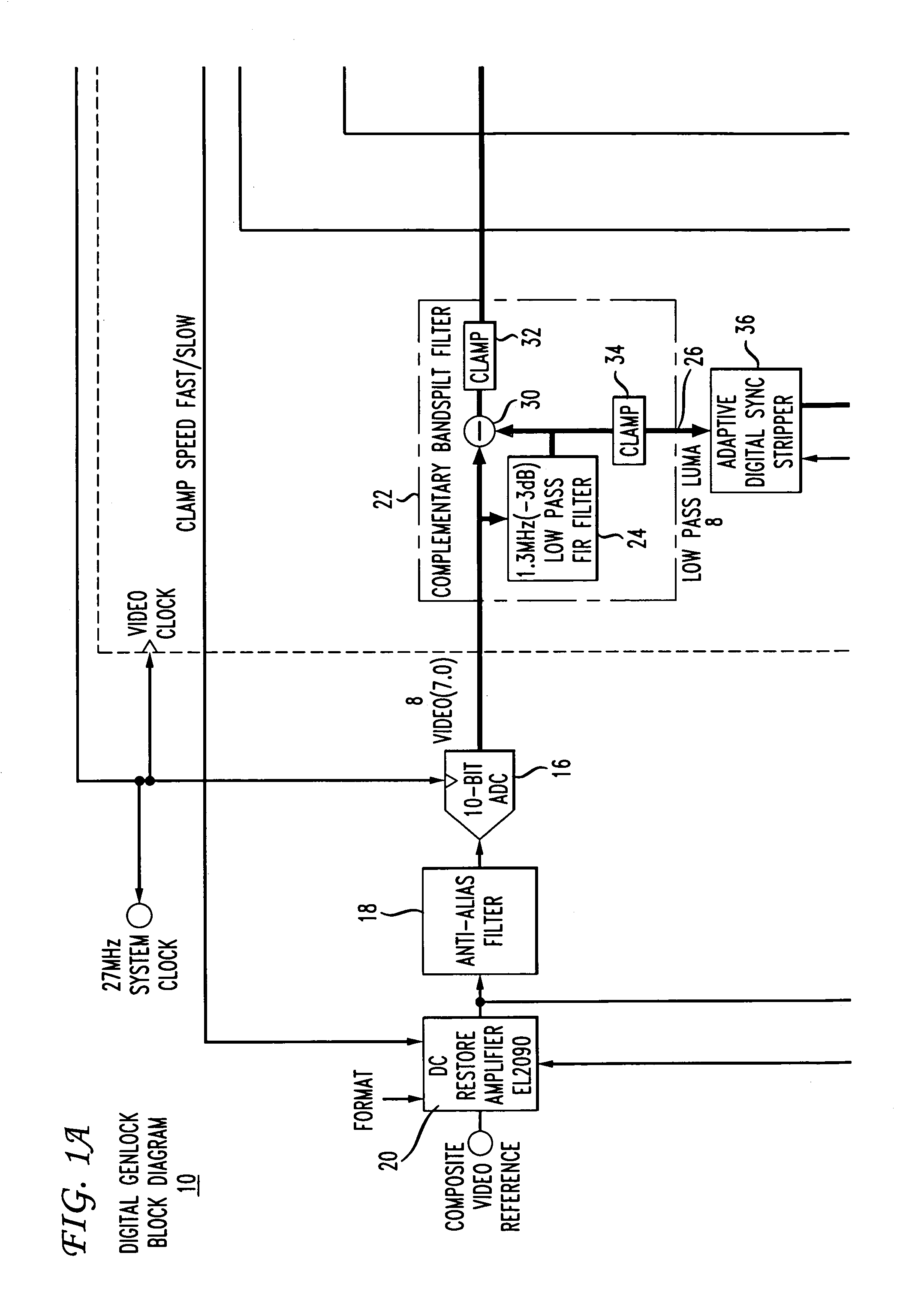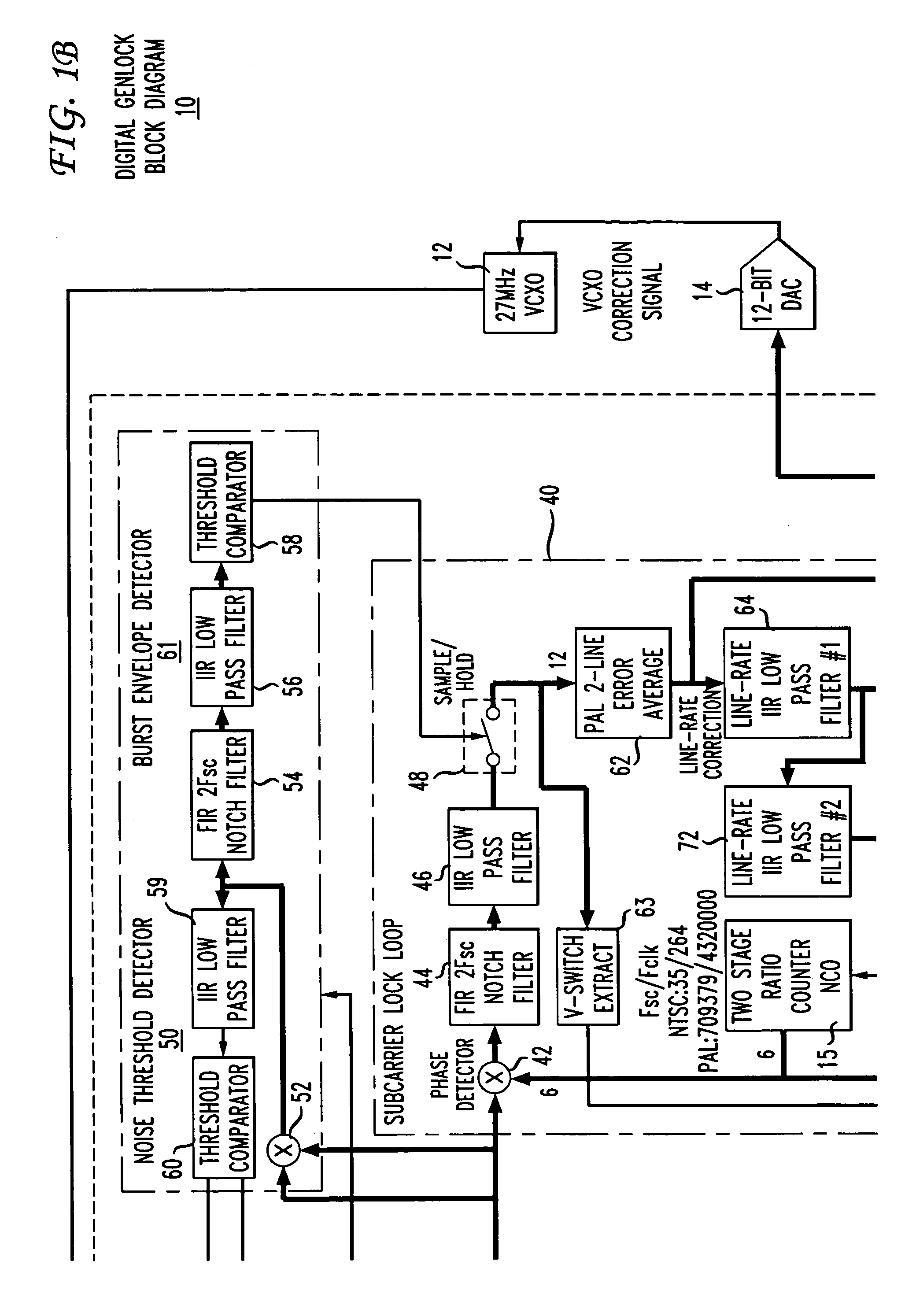Digital synchronizing generator
- Summary
- Abstract
- Description
- Claims
- Application Information
AI Technical Summary
Problems solved by technology
Method used
Image
Examples
Embodiment Construction
[0015]FIG. 1 depicts a block schematic diagram of an illustrative embodiment of a digital synchronizing generator 10 in accordance with the present principles. The generator 10 includes a Voltage Controlled Oscillator (VCXO) 12 that generates a clock frequency of 27 MHz for locking to an incoming video signal for synchronizing one or more video sources (not shown). The VCXO 12 responds to a VCXO correction signal generated by Burst Lock / Color framing circuit 13 and converted from a digital to an analog signal by a Digital-to-Analog Converter (DAC) 14 prior to receipt at the VCXO. As described below, the framing circuit 13 generates the VCXO correction signal in accordance with a static phase offset from an ideal 90° phase offset between the digitized burst component of the incoming video signal and a numerically controlled oscillator clock 15 described in greater detail below. In this way, the 27 MHz. clock signal becomes locked to the incoming video signal.
[0016]The 27 MHz. clock s...
PUM
 Login to View More
Login to View More Abstract
Description
Claims
Application Information
 Login to View More
Login to View More - R&D
- Intellectual Property
- Life Sciences
- Materials
- Tech Scout
- Unparalleled Data Quality
- Higher Quality Content
- 60% Fewer Hallucinations
Browse by: Latest US Patents, China's latest patents, Technical Efficacy Thesaurus, Application Domain, Technology Topic, Popular Technical Reports.
© 2025 PatSnap. All rights reserved.Legal|Privacy policy|Modern Slavery Act Transparency Statement|Sitemap|About US| Contact US: help@patsnap.com



